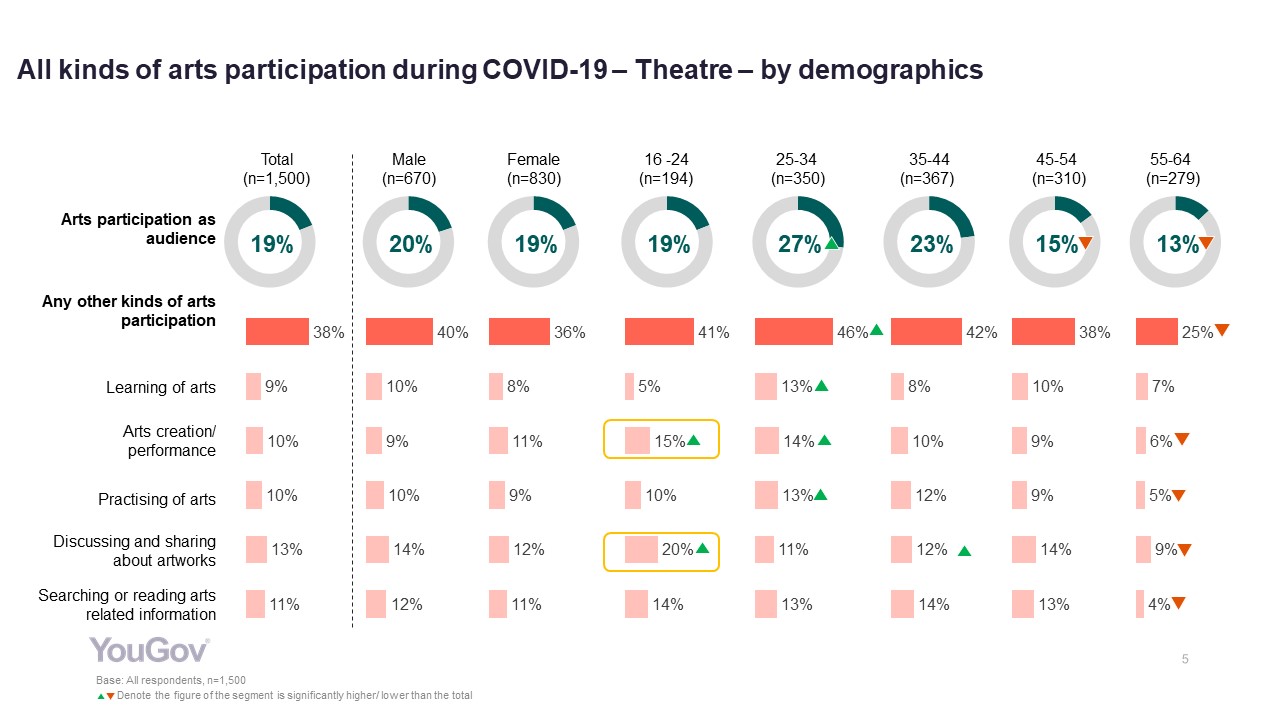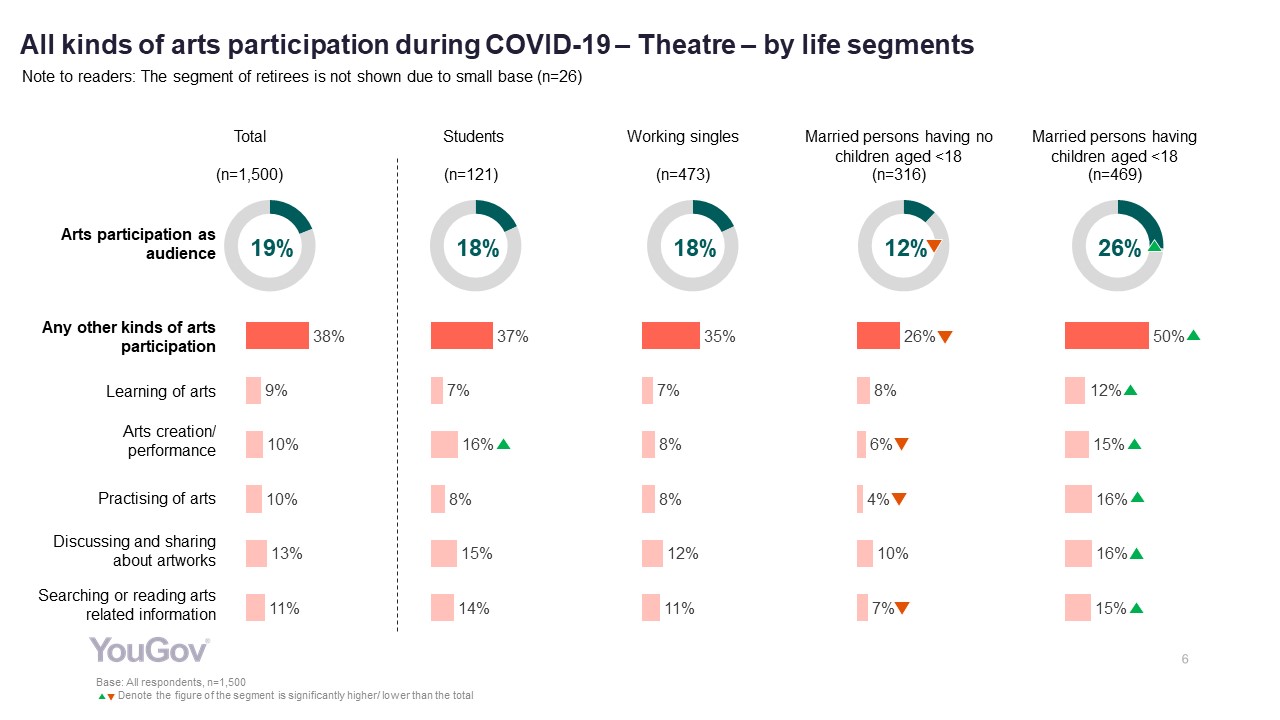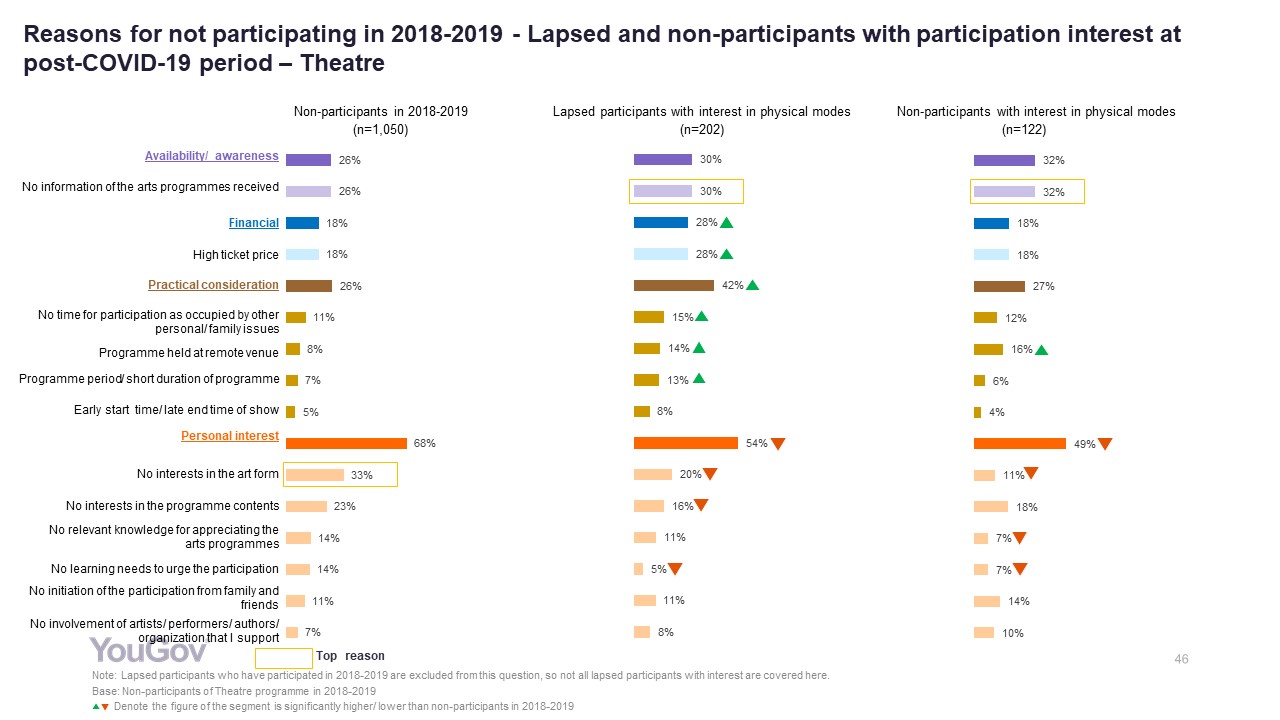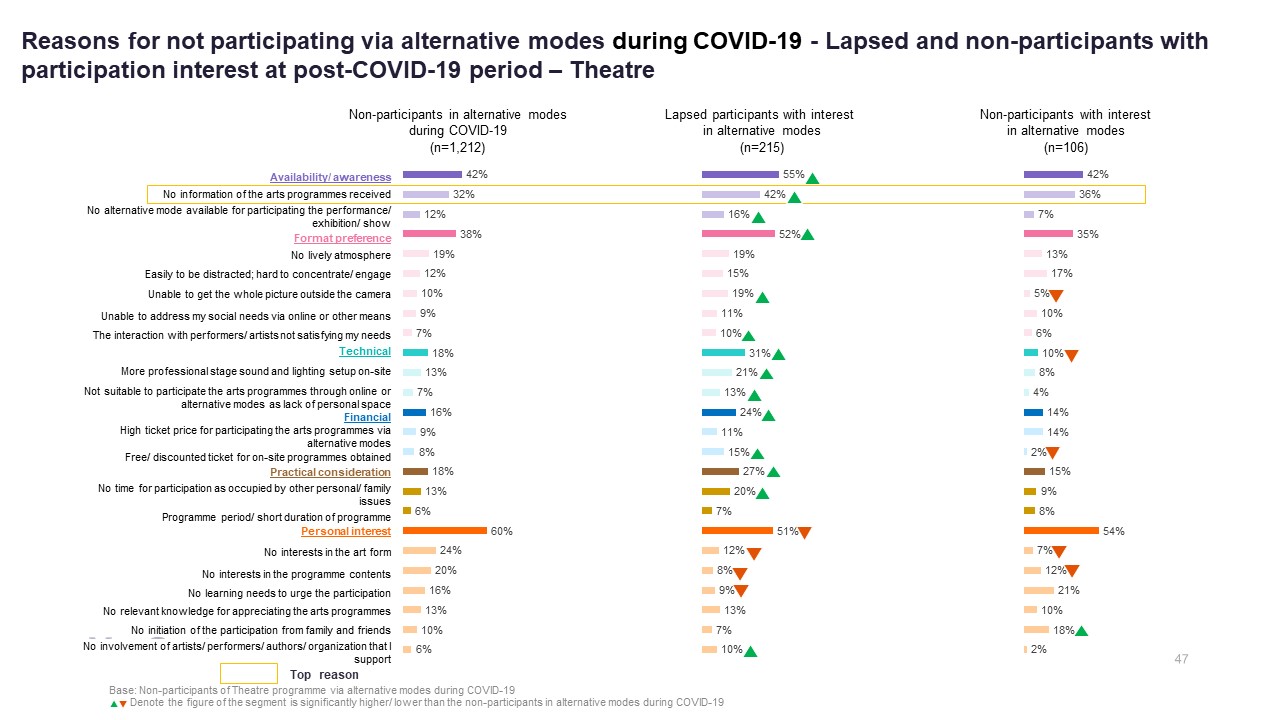Alternative Modes of Arts Participation Survey Highlights – Theatre
Hong Kong Arts Development Council commissioned a research consultancy to study the public perceptions of and behaviours on alternative modes of arts participation during COVID-19, in particular being the audience via alternative channels such as social media, paid video-on-demand platforms, and TV / radio broadcast. An online survey was conducted in January 2021 on a random sample of 1,500 Hong Kong citizens aged 16-64. Full report of the survey has been published here. The following is a summary of findings on the Theatre section.
| 1 | Changes in Overall Participation Incidence | |
| 1.1 | Participation in Theatre programmes dropped from 28% in 2018-2019 to 19% during COVID-19. (See the left of the chart below) | |
| 1.2 | Of the 1,500 respondents, 58% had at some point participated in Theatre programmes as audience. 12% of the respondents were Retaining Participants, who were not influenced by COVID-19 and had participated in all time periods. (See the right of the chart below) | |
| 1.3 |
Despite 14% of the respondents having lapsed since the COVID-19 outbreak, 4% resumed participation in Theatre programmes during the epidemic. (See the right of the chart below) |
|
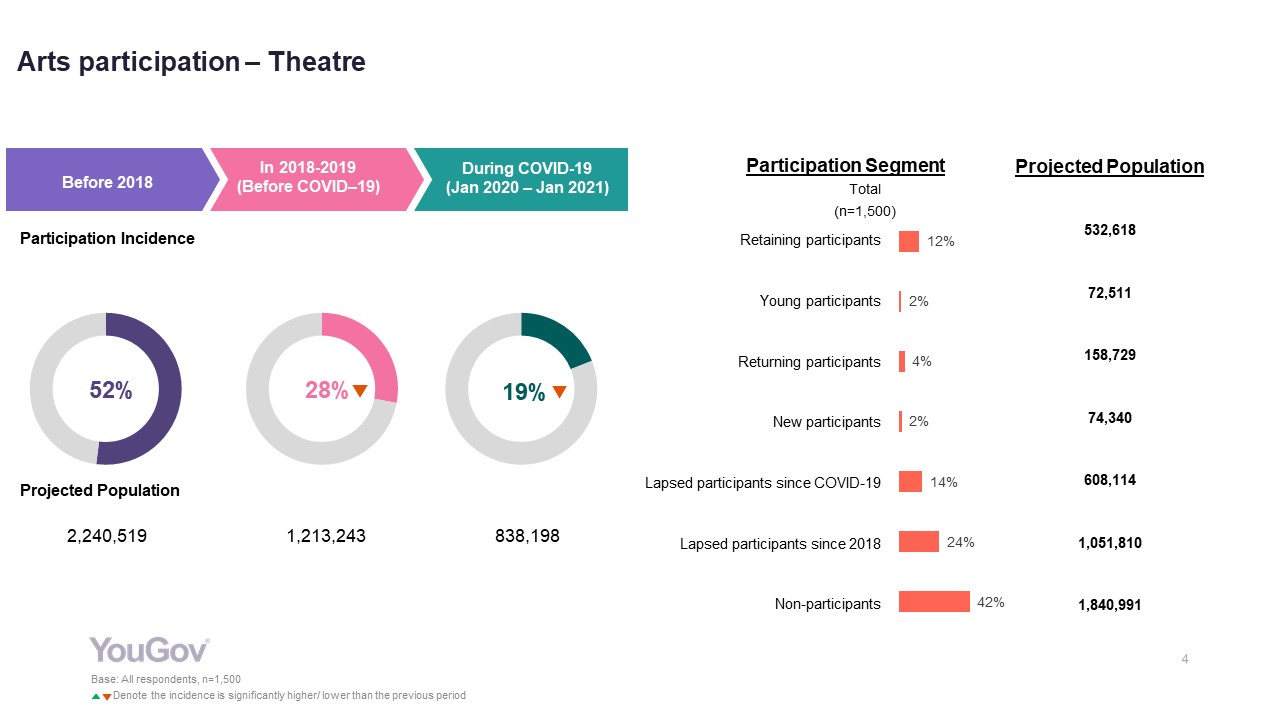 |
||
| 1.4 | During COVID-19, young adults aged 25-34 and married persons having children under the age of 18 were relatively more active in watching Theatre programmes or participating in other kinds of activities related to Theatre. | |
| 2 | Physical-mode and Alternative-mode Participation and Future Potential | |
| 2.1 | The percentage of audience participation in Theatre programmes via alternative modes grew from 63% in 2018-2019 to 93% during COVID-19. The main channels were social media platforms and TV/radio broadcast. (See the right of the chart below) | |
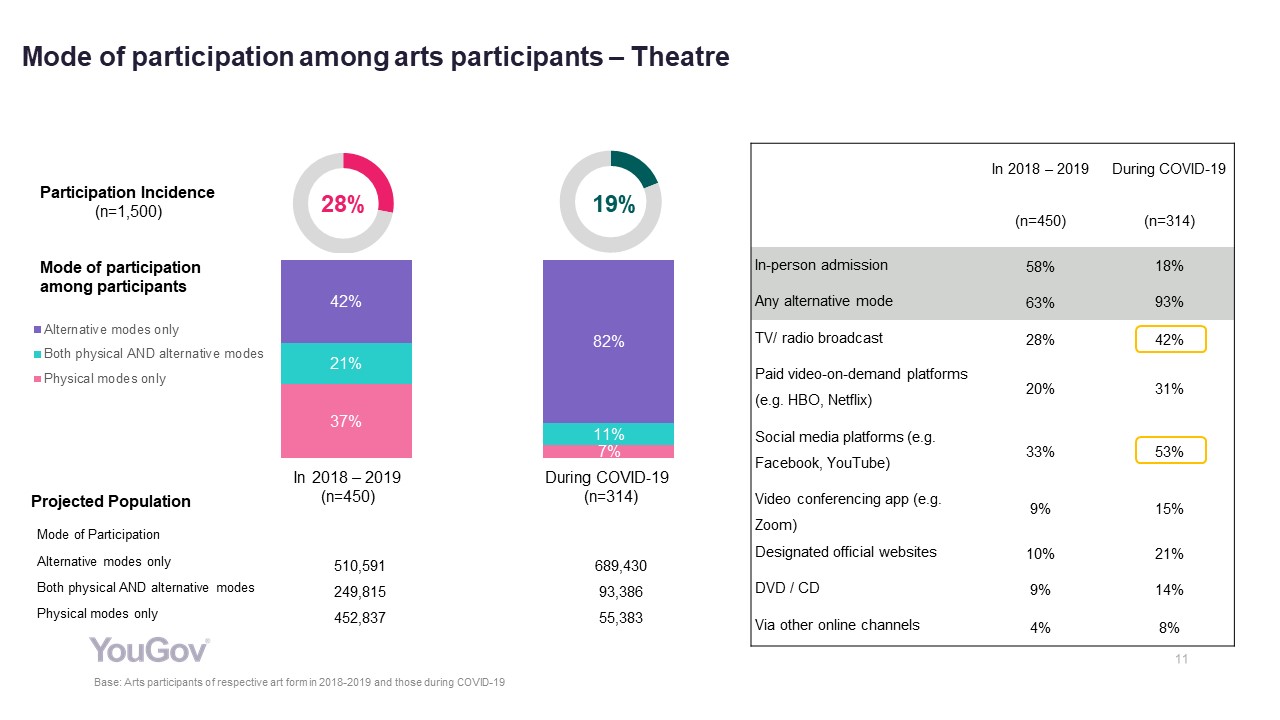 |
||
| 2.2 | Compared to physical-mode participation before the epidemic, alternative-mode participation in Theatre programmes during COVID-19 was more frequent. (From the left of the chart below, in 2018-2019, 21% of physical-mode participants participated 3 times or more on average per year; whereas during COVID-19, 30% of alternative-mode participants participated 3 times or more.) | |
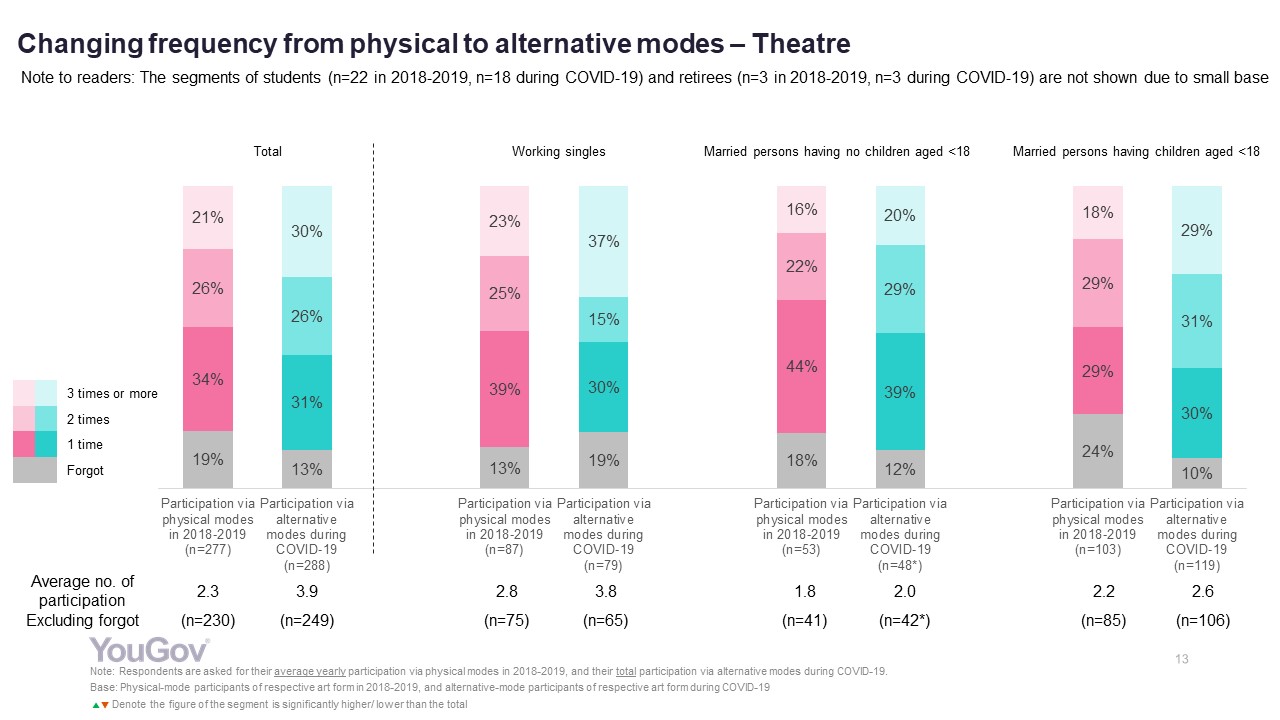 |
||
| 2.3 | During COVID-19, 33% of participants were willing to pay for alternative-mode Theatre programmes. (See the left of the chart below) | |
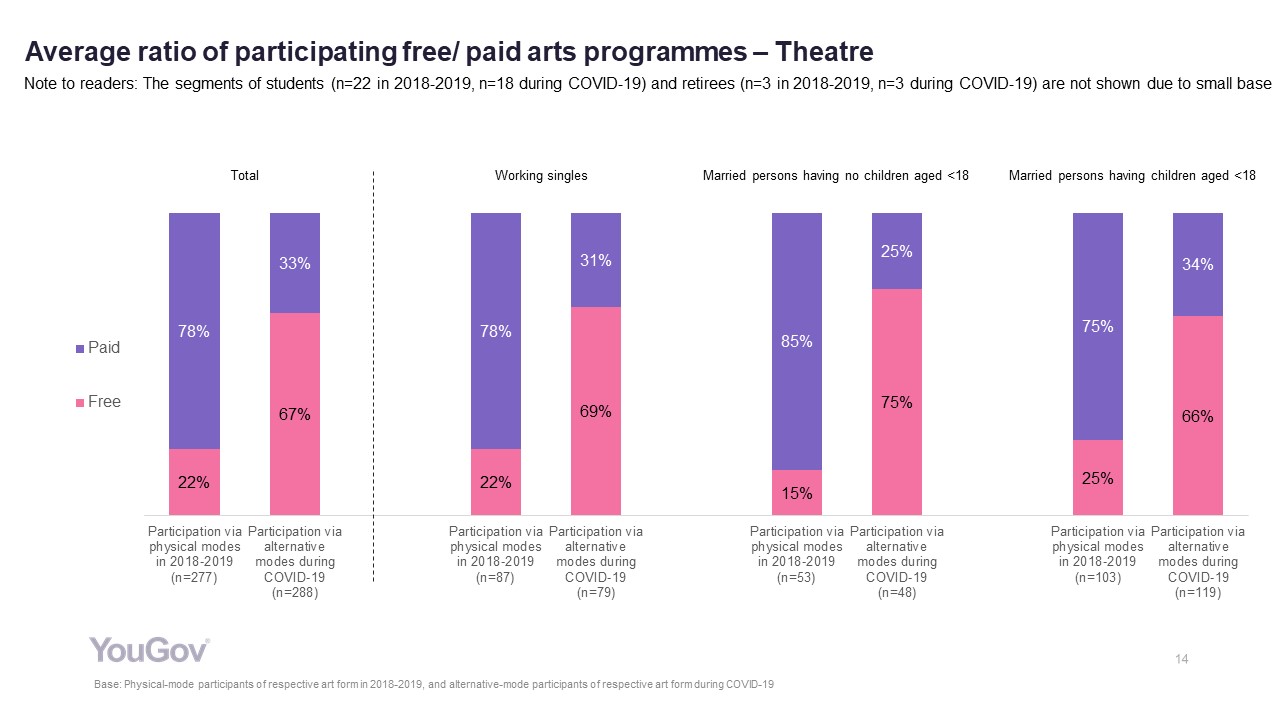 |
||
| 2.4 | Participation rate in non-local Theatre programmes during COVID-19 (48%) was higher than that before the epidemic. (See the left of the chart below) | |
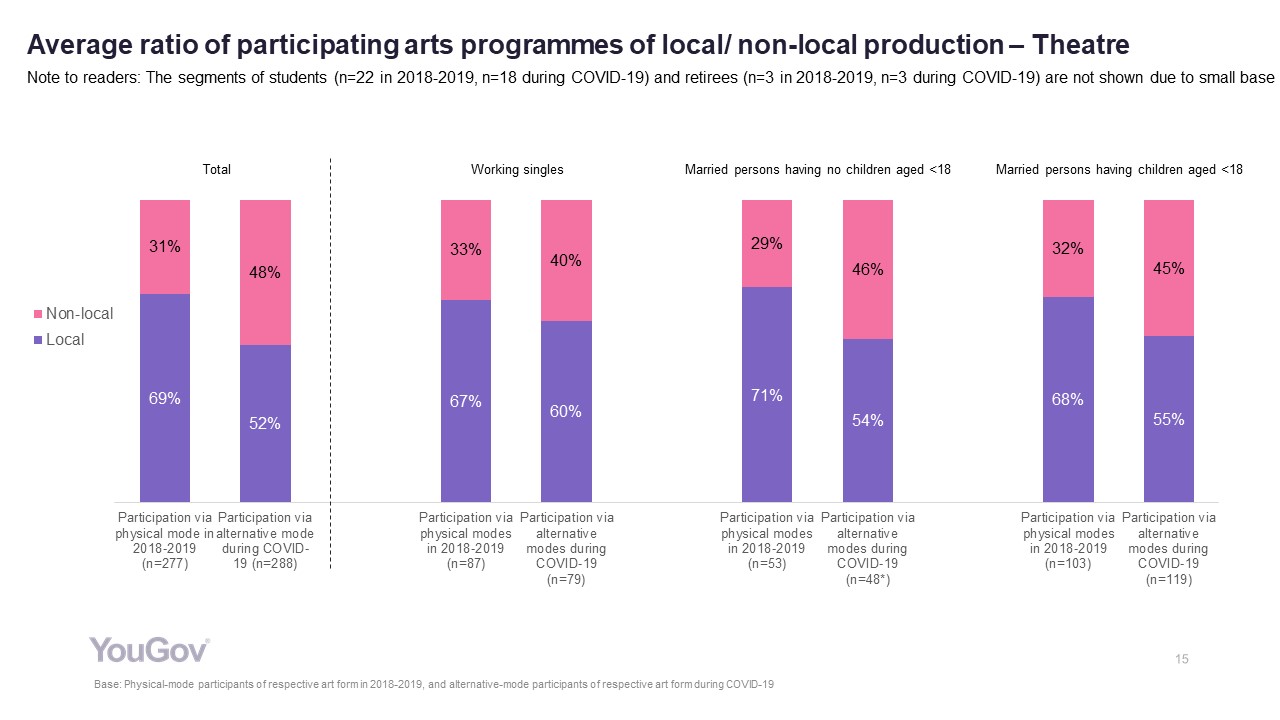 |
||
| 2.5 | 63% of all respondents expressed interest in watching Theatre programmes at post-COVID-19 period, nearly double the actual participation incidence (33%) in Jan 2018 - Jan 2021. The interest growth was more prominent for physical-mode Theatre programmes. (See the chart below) | |
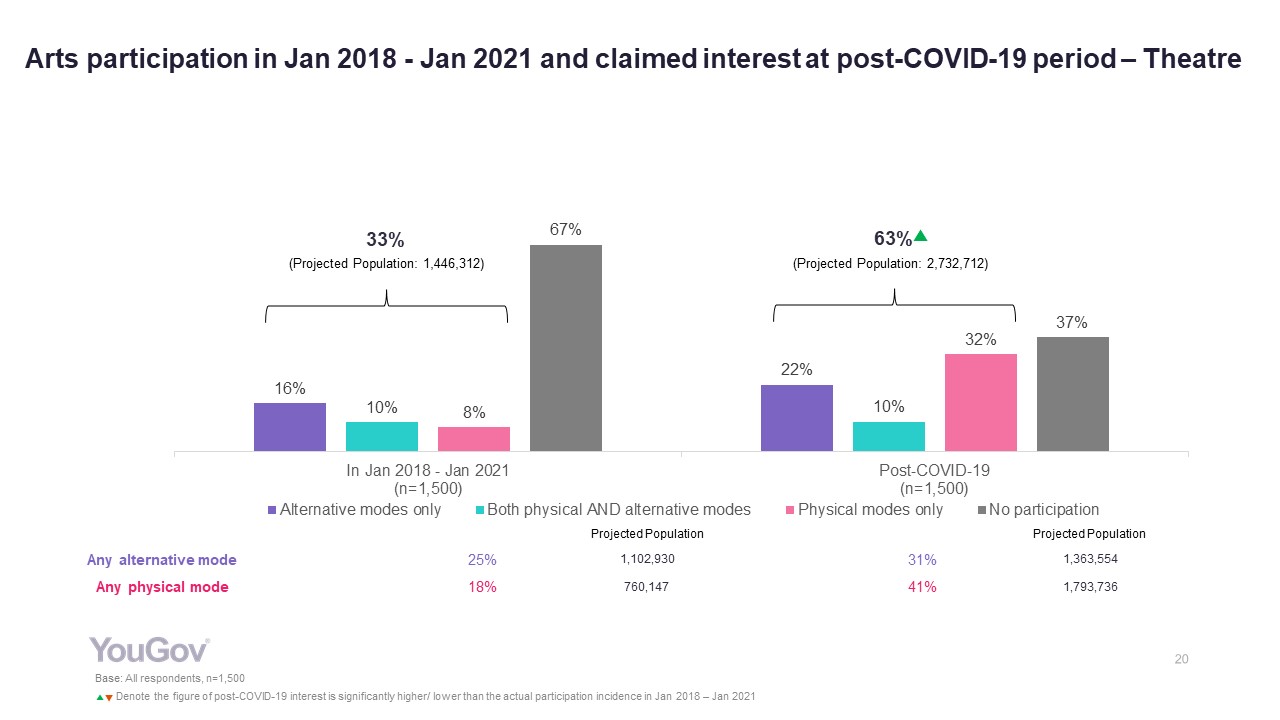 |
||
| 3 | Potential Participants | |
| 3.1 | Over 60% of the respondents expressed interest in watching Theatre programmes at post-COVID-19 period. From the chart below, it could be seen that the sample of potential participants (the right column) and that of Theatre programme audience from Jan 2018 to Jan 2021 (the middle column) were both skewed towards people aged 25-34 and married persons having children under the age of 18. They generally had higher educational attainment and household income. (See the chart below) | |
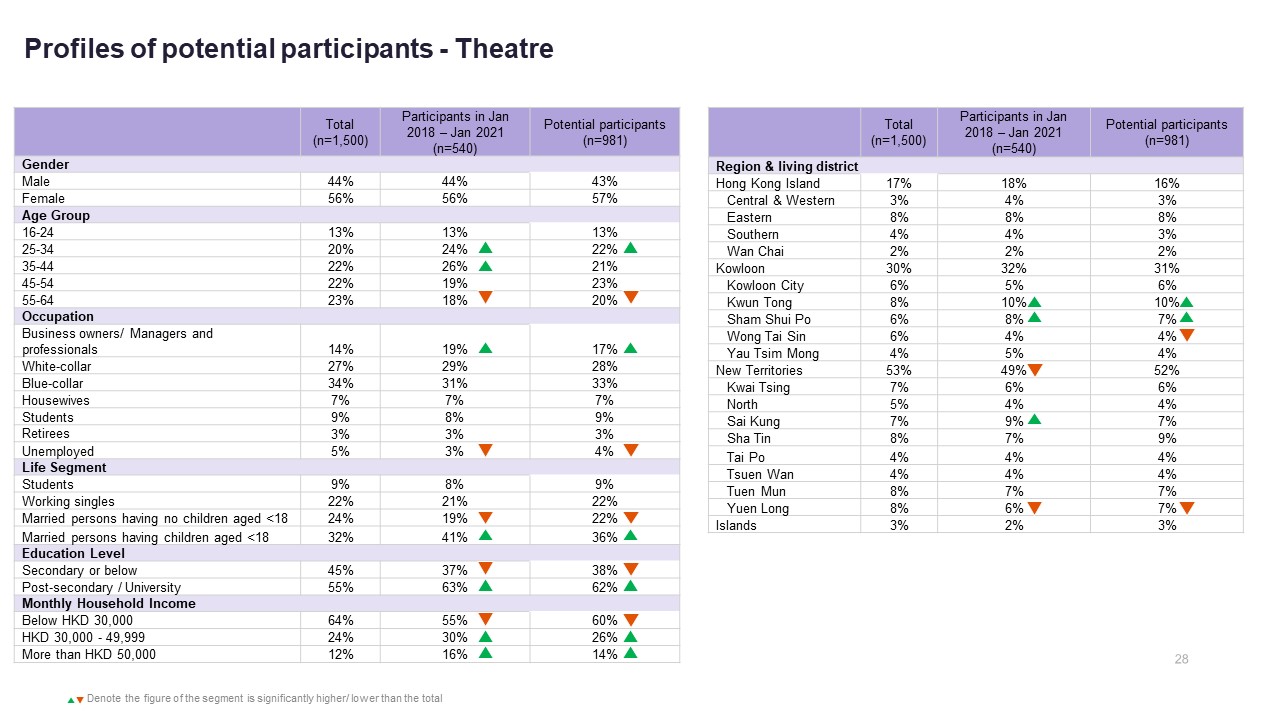 |
||
| 3.2 | Compared to men, women were more interested in attending physical-mode Theatre programmes at post-COVID-19 period (see the chart below). | |
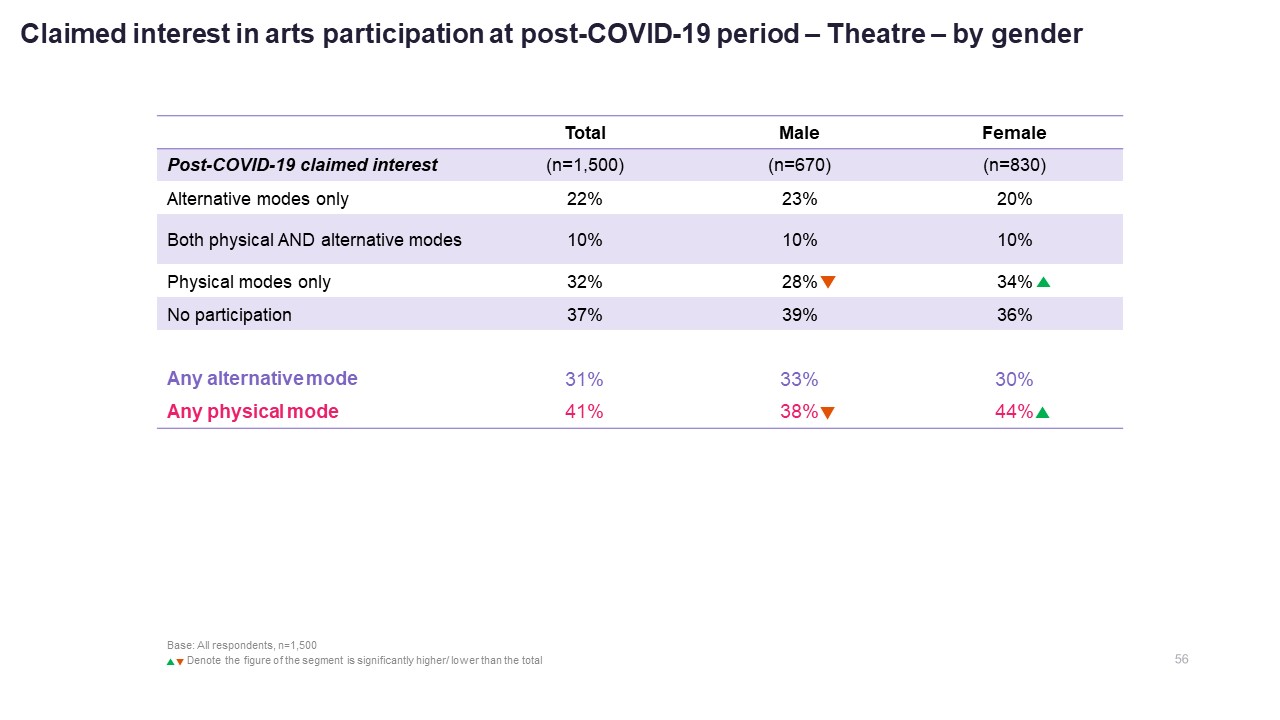 |
||
| 3.3 | Among those female respondents who did not participate in alternative-mode Theatre programmes during COVID-19, 22% thought alternative-mode participation lacked a lively atmosphere (the corresponding percentage for male was 15%). In 2018-2019, among those female respondents who did not participate in Theatre programmes via any modes, 21% said they were deterred by high ticket prices (the corresponding percentage for male was 16%). Therefore, in order to attract women to attending physical-mode Theatre programmes, the ticket prices should be more affordable. | |
| 3.4 | Potential participants of alternative-mode Theatre programmes generally expected to pay at 50% of the physical ticket price (see the left of the chart below). Working singles and married persons having children under the age of 18 were relatively more willing to pay more for alternative-mode Theatre programmes. | |
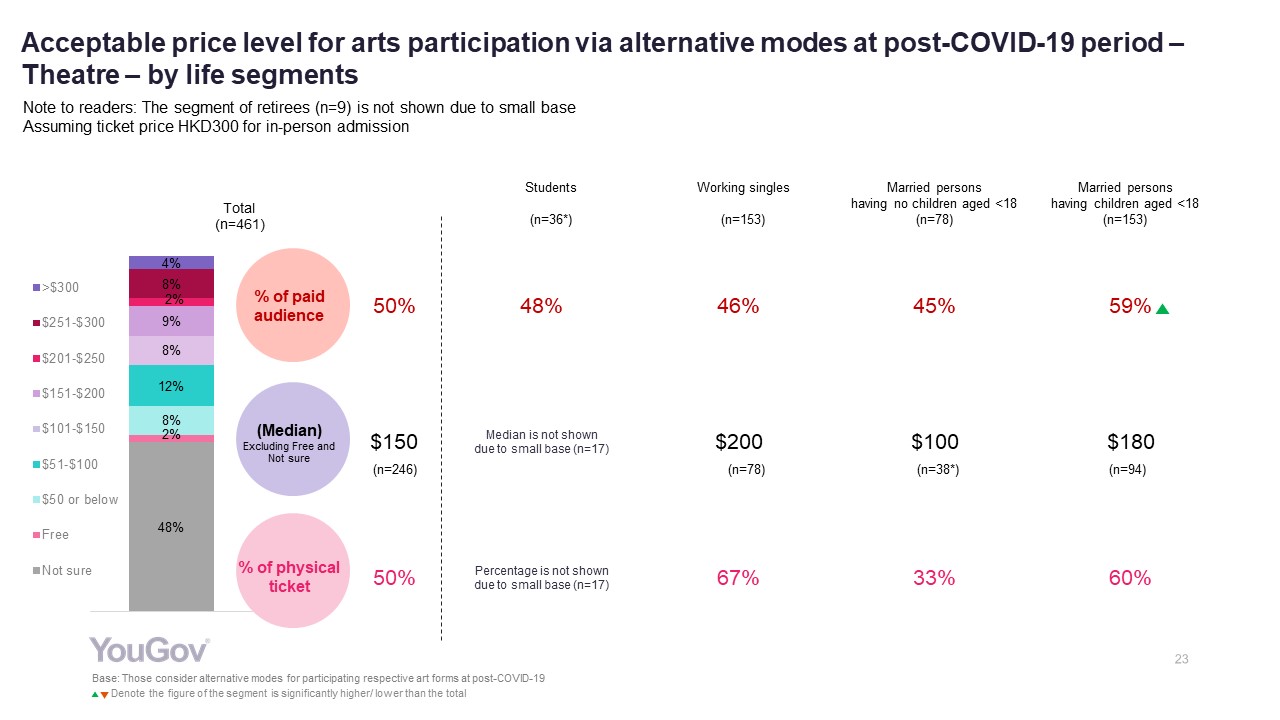 |
||
| 3.5 | More than 70% of potential participants at post-COVID-19 period did not watch any Theatre programmes at the moment (i.e. they were Lapsed Participants or Non-participants), primarily because they had not received information on the arts programmes (see the chart below). Therefore, to attract these potential participants, more effective communication channels, such as social media platforms, emails, and ads on mobile apps or websites, should be used to disseminate programme information. | |
| Click here to download the full analysis on the Theatre section. | ||



